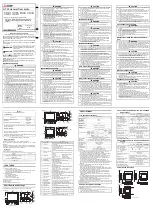
Validity
The values saved in the PLC, which have been sent by the slaves, have a time-dependent
Validity.
If the building control station polls the saved data within the valid period of time, the PLC sends
the saved data directly to the building control station. However, if the polling to the PLC is
outside of this valid time period, the PLC first polls the slaves and then sends these updated data
to the building control station.
Pause
The time entered in
Pause is the time that elapses before the PLC polls a slave after it has
responded to the last polling by the PLC.
Timeout
If the slave does not respond to a PLC polling after the time in
Timeout has elapsed, an alarm is
generated.
Expansion module (1400-9386)
Expansion modules are connected by specifying their station address. This station address can
be entered in default state (reset over the jumpers) using the last two figures of the serial num-
bers.
Example:
The serial number 600116 means that the station address is 16.
This can only be dialed by the broadcast function when
one
expansion module is connected.
5.4
Meter bus interface
Thanks to the meter bus interface, the PLC can communicate with up to 3 heat and water meters
according to EN 1434-3.
Details on the use of the different heat and water meters can be found in the technical documen-
tation TV-SK 6311.
5.4.1 Activating the meter bus
To successfully transfer data from the heat meter (WMZ) to the PLC, the heat meter must use a
standardized protocol in accordance with EN 1434-3. It is impossible to make a general state-
ment about which specific data can be accessed in each meter. For details on the different meter
makes, refer to the technical documentation TV-SK 6311.
EB 5571 EN
23
Communication
Содержание TROVIS 5571
Страница 43: ...EB 5571 EN 43...
















































